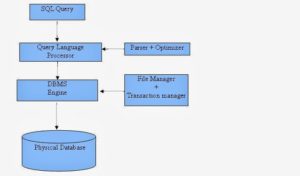Oracle Introduction
Oracle is a relational database management system, which Organizes data in the form of tables. Oracle is one of many database servers based on RDBMS model, which manages a seer of data that attends three specific things-data structures, data integrity and data manipulation.
With oracle cooperative server technology we can realize the benefits of open, relational systems for all the applications. Oracle makes efficient use of all systems resources, on all hardware architecture; to deliver unmatched performance, price performance and scalability.
Features of Oracle:
Portable:
The Oracle RDBMS is available on wide range of platforms ranging from PCs to super computers and as a multi user loadable module for Novel NetWare, if you develop application on system you can run the same application on other systems without any modifications.
Compatible:
Oracle commands can be used for communicating with IBM DB2 mainframe RDBMS that is different from Oracle, which is Oracle compatible with DB2. Oracle RDBMS is a high performance fault tolerant DBMS, which is specially designed for online transaction processing and for handling large database applications.
Multithreaded Server Architecture:
Oracle adaptable multithreaded server architecture delivers scalable high performance for very large number of users on all hardware architecture including symmetric multiprocessors (sumps) and loosely coupled multiprocessors. Performance is achieved by eliminating CPU, I/O, memory and operating system bottlenecks and by optimizing the Oracle DBMS server code to eliminate all internal bottlenecks.Oracle has become the most popular RDBMS in the market because of its ease of use
• Client/server architecture.
• Data independence.
• Ensuring data integrity and data security.
• Managing data concurrency.
• Parallel processing support for speed up data entry and online transaction processing used for applications.
Database: Database is a logically coherent collection of data with some inherent meaning, representing some aspect of real world and which is designed, built and populated with data for a specific purpose.Simply It is collection of meaningful data.
Ex:
SNO SNAME MARKS
101 MALLI 99
102 SREE 98
103 KRISH 97
104 VISH 96
Management System: It is a software it helps to manage the database management system should able to perform the following activities very easily.
1. Inserting the new data.
2. Updating the exiting data.
3. Deleting unnecessary data.
4. Retrieving the require data.
A database along with the software which helps to manage the database is called database management system (DBMS).
The database system in which the relationships among different tables are maintained is called Relational Database Management System.( RDBMS)
Examples of RDBMS:
1. ORACLE
2. SQL SERVER
3. DB2
4. MYSQL
5. SYBASE
6. TERA DATA
7. MS ACCESS
SQL:
Structured Query Language (SQL) is a language that provides an interface to relational database systems. SQL was developed by IBM in the 1970s for use in System R, and is a de facto standard,as well as an ISO and ANSI standard ,sql is often pronounced SEQUEL.
Features of SQL:
1. It is a command based language.
2. It is not case sensitive. It is similar to English
3. Every command should end with ‘;’.
4. Every command starts with “verb”.
SQL Process:
When you are executing an SQL command for any RDBMS, the system determines the best way to carry out your request and SQL engine figures out how to interpret the task. There are various components included in the process. These components are Query Dispatcher, Optimization Engines, Classic Query Engine and SQL Query Engine, etc. Classic query engine handles all non-SQL queries but SQL query engine won’t handle logical files.
Following is a simple diagram showing SQL Architecture:

Sub Sets of SQL:
1. DDL (Data Definition Language)
2. DML (Data Manipulation Language)
3. DRL/DQL (Retrieval/query)
4. TCL (Transaction Control Language)
5. DCL (Data Control Language)